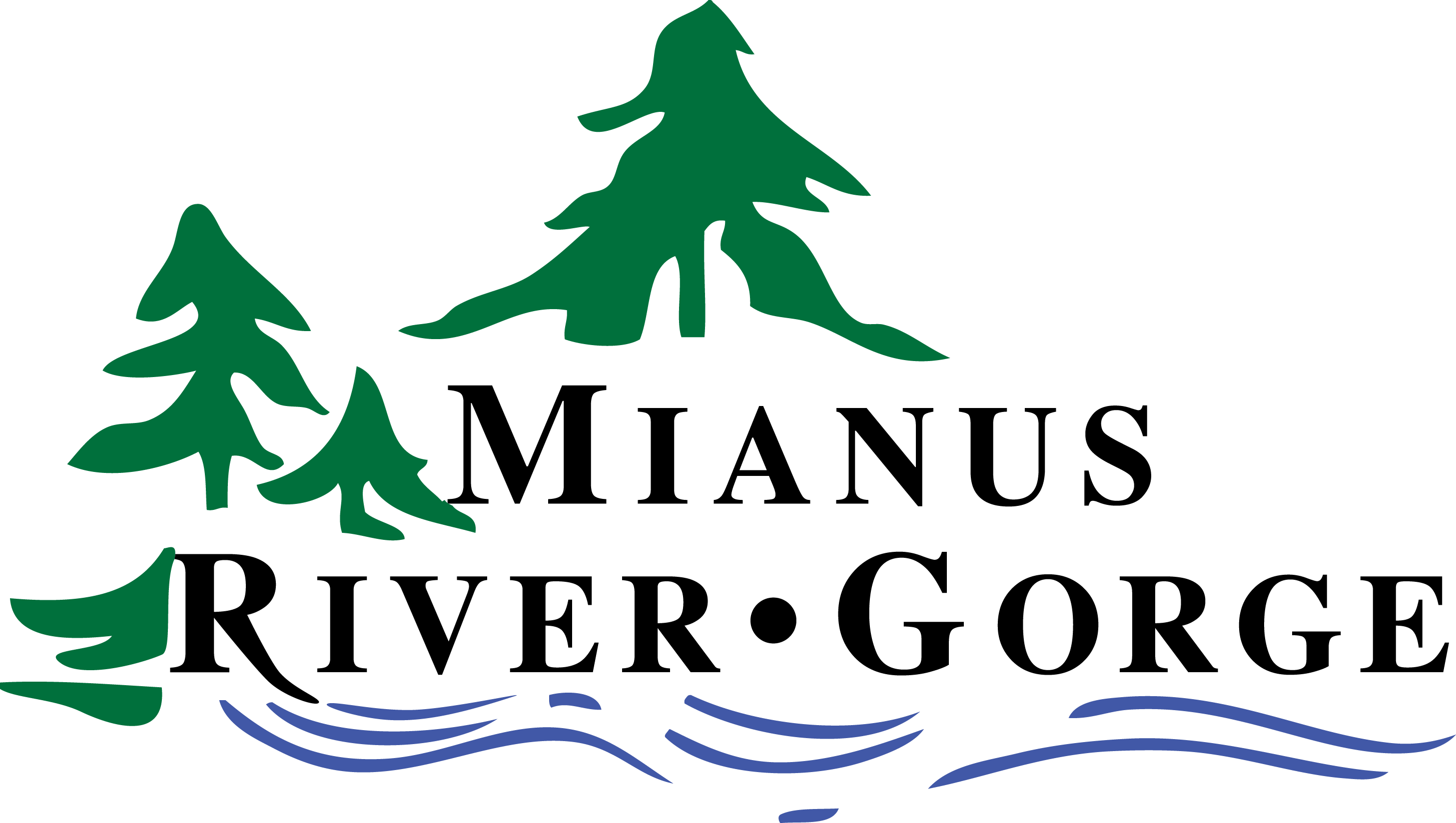
Winter 2022
MRG publishes paper on deer management and forest regeneration
One of the most pressing issues for land managers in the Northeast is addressing the impacts of super-abundant white-tailed deer. The suburbs and exurbs offer an almost-ideal habitat for deer – with patches of forest to offer food and refuge, large yards and gardens that offer supplemental food, and reduced numbers or complete absence of effective animal predators (e.g., wolves) and human hunters. These factors, along with our ever-milder winters, have led to extremely high white-tailed deer densities in our area.
All of these deer need to eat, and deer love to eat young, tender trees. Thus high deer numbers have led to severely reduced forest regeneration, where, in many cases, there are no young trees to eventually replace the older ones. Many species of forest wildflowers, that never grow tall enough to escape the teeth of deer, have been completely extirpated from some areas.
In 2004, MRG began a deer management program (DMP), where approved recreational hunters were allowed to hunt on our land. Staff collected data such as hours hunted, deer seen, and number of deer harvested from every hunter. Simultaneously we established 22 large vegetation plots scattered across the main preserve that would be monitored every 3-5 years. In 2009, our staff developed a method to estimate the density of deer on the land using camera traps, and have estimated deer numbers on the Preserve annually since then.
Examining long-term forest change and the role of deer in the evolution of the Gorge is a continual avenue of inquiry for our research program. The first veg-plot survey in 2004 was compared to an older study performed in 1965 (Bard 1967) to describe the changes that have occurred in the Gorge over the 40-year span and the findings for this comparison led to the recognition for the need for deer management. The implementation of a DMP led to former Director of Research Mark Weckel’s extensive dissertation research and several deer-related publications while he was on staff.
For the present effort, in 2020 and 2021 we analyzed these three datasets – hunting, deer, and vegetation surveys — to see if our management program was reducing deer density in the Preserve, and if that reduction was allowing the trees to grow back. We limited our comparison to woody species (trees and shrubs) for the time being but we have data on wildflower species as well.
The results of this large and multi-faceted study were recently published in the journal Forest Ecology and Management in January 2022. One of our high school researchers, Chloe Ng, was instrumental in crunching the numbers and in preparing the manuscript. MRG staff researchers, Chris Nagy and Budd Veverka, along with Mark Weckel, were the other authors.
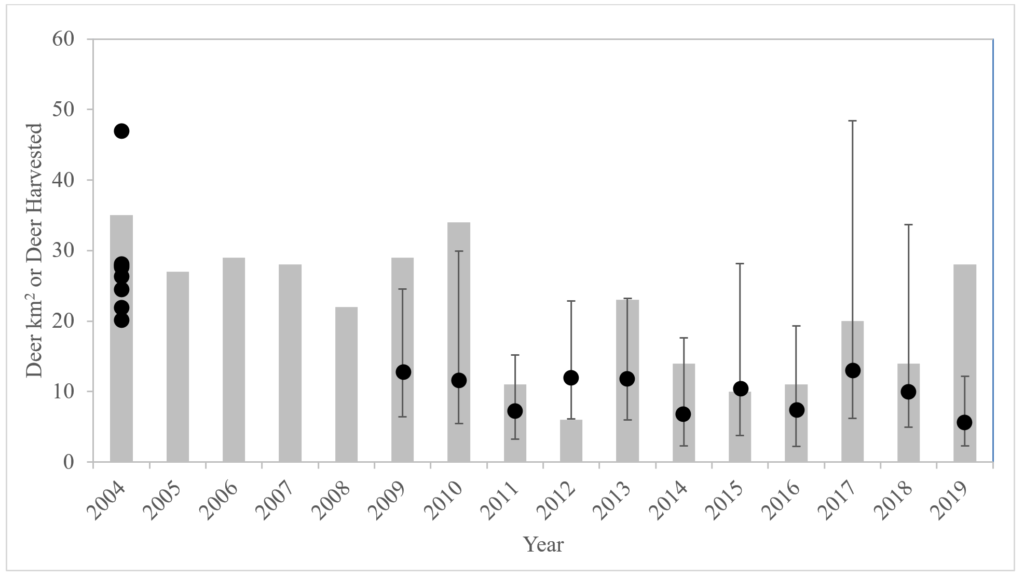
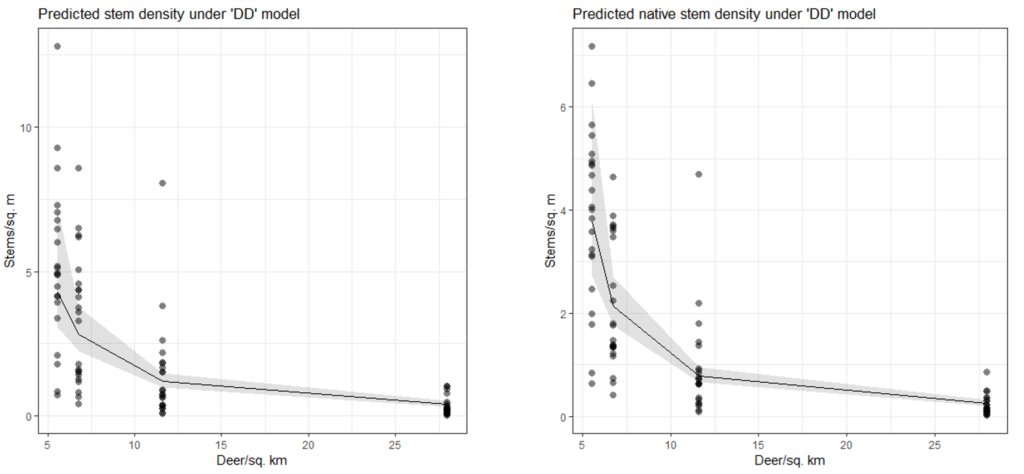
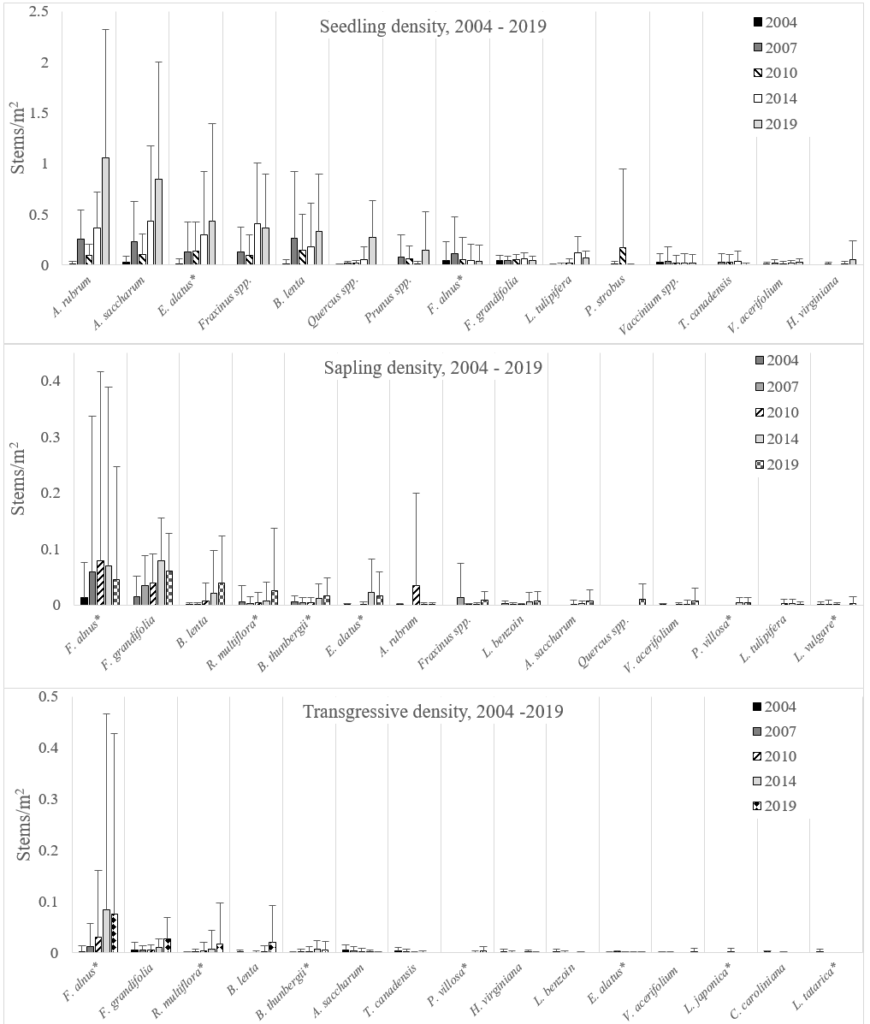
The study concluded that the DMP had caused measurable improvement in the diversity and density of woody stems overall (Figure 1), but these gains were limited to small (<1m tall) seedlings and saplings (Figure 2). Improvement has not yet been observed in trees over 2 meters, with a few exceptions such as black birch and maple-leaf viburnum that improved even up to 2 meters tall or beyond. It is promising that we have seen these gains but we are uncertain whether the measured improvements are a sign of gradual progress or are the maximum we can hope for.
This is probably MRG’s largest and most comprehensive research study to date. Thank you to everyone involved – staff, students, interns, our volunteers, our Board, and our supporters – who made it possible. You can view the summary of the research here.
If you are interested in the full paper, please email chris@mianus.org
For a full list of our academic publications, please visit our Scientific Publications page.
MRG Participates in SNAPSHOT USA for third year
Snapshot USA is a nation-wide effort, coordinated by the North Carolina Museum of Natural Sciences and the Smithsonian Conservation Biology Institute, to sample wildlife across as many states, ecoregions, and habitats as possible with camera traps. MRG has participated since Snapshot’s first year, 2019, and for the last two years has submitted data from both the Gorge and our cameras in NYC. In 2021, MRG staff collected and identified over 72,000 images from these two zones.
Being part of Snapshot has been fruitful in terms of research output for MRG and the other partners. The project leaders at NC State and the Smithsonian have published Snapshot’s 2019 data already, and there are two more papers in the works, one of which examines the differences between wildlife activity in 2019 versus 2020 during the COVID pandemic. Most parks and preserves saw an increase in hiking and other recreation in 2020 as outdoor activities were often the only things left to do during lockdown, and more people in the woods likely had an effect on the animals.
“After you study a system for a while, you realize there are often questions you want answers for that can only be addressed by combining information from many different places and situations. You can’t find general rules or patterns or truths by looking at just your own spot,” said Chris Nagy, MRG Director of Research and Education. “Is what we observe with coyotes or deer or bobcats at the Gorge or in New York City typical or not? Can we predict anything about wildlife ecology beyond the places we sample? We’re always looking to collaborate with others, particularly those working in urban systems, to get at this larger perspective.”
To find out more about Snapshot USA, visit https://emammal.si.edu/snapshot-usa
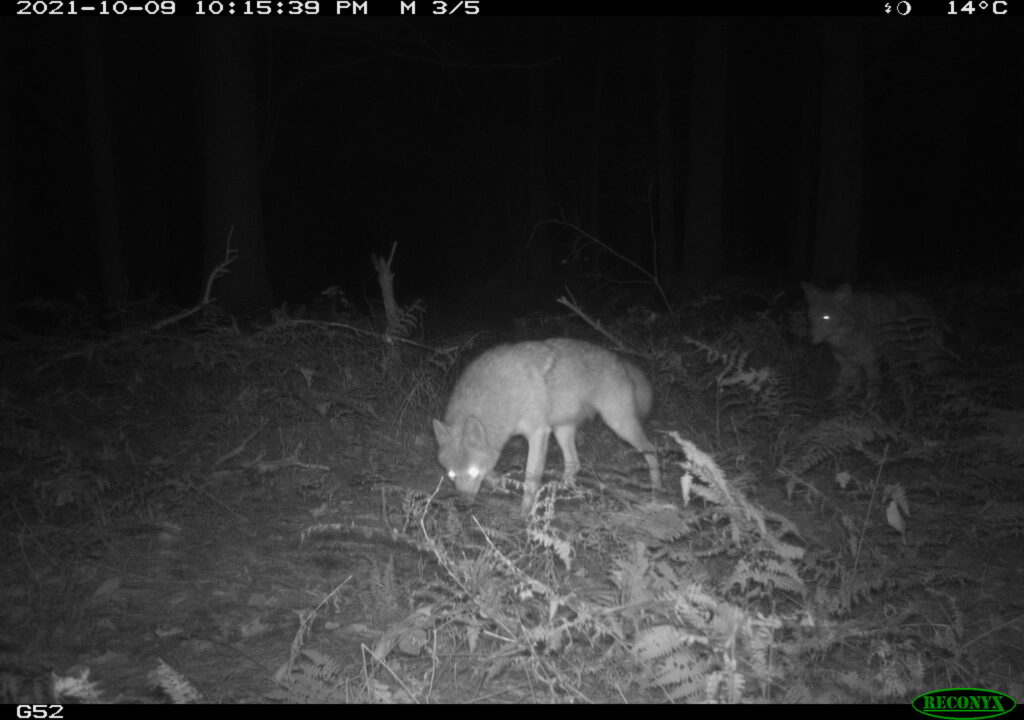
RAP Awardee Zach Gajewski is now “Dr. Gajewski” to you!

We are happy to announce that 2016 RAP awardee Zach Gajewski successfully defended his dissertation in July 2021, and earned his Ph.D. this fall. He is now doing a postdoc at North Carolina State. Zach mentored two WTP students, Will Cranier and Trest Wacaster, and has a paper in prep that includes data collected by Will and Trent.
Zach studied the prevalence of the fungal pathogen Batrachochytrium dendrobadtidis (Bd) in a set of wetlands at MRG. Bd infects the skin of frogs and other amphibians and often leads to death, and globally Bd now threatens many species of amphibians. Zach found Bd in some of our wetlands but not others. Out of four common frog species, only one was infected in substantial numbers.
Based on his research, Zach recommended that MRG monitor the frog populations in as many of our vernal pools and wetlands as possible. To this end, we will be piloting the use of acoustic recorders to estimate the abundance of frogs non-invasively at several wetlands this spring.
Shooting hemlocks for their own good with John Peregrin

Our most recent RAP student, John Peregrin (Columbia University) is studying the efficacy of the basal bark treatments we gave our hemlock trees 2017-2019. The hemlock wooly adelgid (HWA), is a parasitic aphid native to Asia which was inadvertently introduced to eastern North America and now threatens the existence of our eastern hemlock as well as the Carolina hemlock found farther south.
John needs samples of branch tips from the very tops of our trees, a set from treated trees and a set from untreated trees, to see if the treatments to kill HWA were effective. But how do you get 5-10 foot long branch tips from the tops of 100’ tall trees?
As odd as it seems, using a shotgun to sample the tall tree canopy is a fairly standard forestry method. John and MRG staff spent a day in June and another in December acquiring the canopy samples. John is analyzing them in the lab now, a far less fun part of the methodology.
John is also mentoring Bettina Holden, a junior at Sacred Heart Greenwich and a student in MRG’s WTP research program. Bettina will examine the health of the hemlock trees themselves as a result of our treatments to complement John’s work on the intensity of HWA infection.

